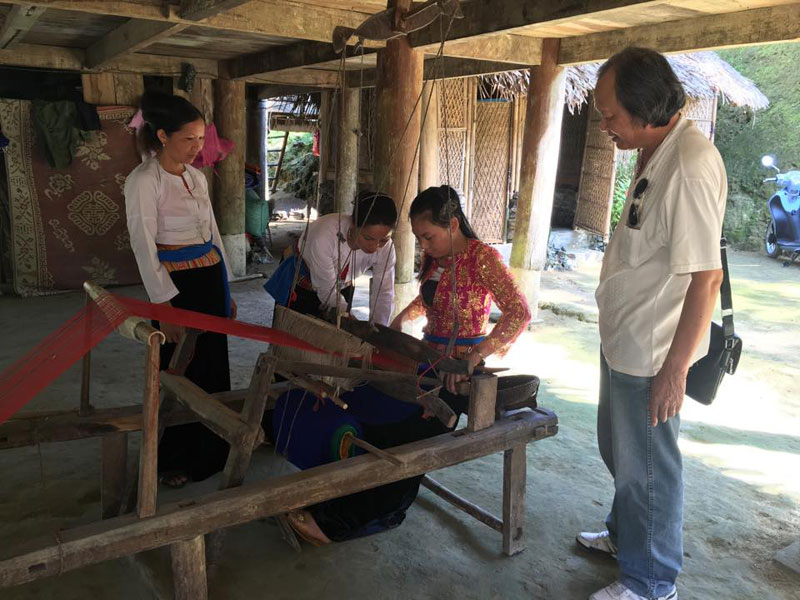


According to Ms. Bui Thi Him, one of the woman pioneers
implementing community tourism in Sat Thuong village: thanks to some women who
attended the model of "Ngoc Son – Ngo Luong community ecotourism branch
invested and managed by the local people” at the end of 2011, the
implementation of homestay form has been taken more advantages. Besides, this
form has been supported by the provincial Tourism Association and Poverty
Reduction Project. Up to now, there have been 6 homestay guesthouses dividing
into 3 areas and located in Mu, Cao and Sat Thuong villages. Especially, the
homestays keep the original unique architecture of Muong ethnic people. The
conditions of dining – sleeping – staying services for accommodation needs of
tourists are served carefully with a spacious space, clean accommodation and
convenience where they can enjoy traditional local food such as sticky rice,
skewed pork, steamed fish, chicken with sour bamboo shoots, leaf dishes, etc.

The tourists are so interested in
seeing women of Sat Thuong village, Tu Do commune (Lac Son) weaving skillfully.
Tu Do tourism is currently the ideal destination for national
and international tourists who enjoy exploring the diverse ecosystems, Mu
waterfall with majestic beauty, poetic Cao waterfall, the great wilderness
forest. Along with that, the tourists are immersed in the community life of
Muong ethnic people, experiencing cultural identities in dining and living
styles of the local people.
Tran Khanh Ly, a tourist from Hoa Binh city expressed: the
scenery here is so wonderful, suitable for adventurous tourists. With the young
people, nothing can be more interesting than enjoying a funny journey to be
here after a long travelling, seeing the mountain and forest and swimming at Mu
waterfall, then relaxing, sightseeing and trying special food of the mountain.
For the rest of the day, they can visit the local houses. The local people are
so hospitable, easygoing, willing to give direction. It will be interesting to
experience of "3 things together”, especially experiencing farming, together
harvesting, threshing, catching the stream fish or weaving fabrics manually
with local people.
Besides the natural beauty, the space of Muong stilt houses
is so romantic leaning against Cao stream, Mu stream is so fresh and you can have a
view of far-sighted rice terraced fields, corn fields far away. Moreover, the
services and welcome of homestay make a good impression, which helps community
ecotourism be more attracted by the tourists. The number of tourists have
increased with the average of more than 10,000 visitors/ year, including more
than 500 accommodation tourists who are mainly foreigners. Being in the tourism
development Project of Lac Son district up to 2020, with a vision to 2030,
belonging to the provincial Tourism Association, the community ecotourism in Tu
Do is promoting its advantages and prospects in the direction of expanding the
connection with surrounding area, such as Pu Luong Preservation Area and Mai
Chau community tourism. The building of tourism villages and attracting local
people’s participation help expand, develop tourism, create more opportunities
for job employment and improve the income of local people here.